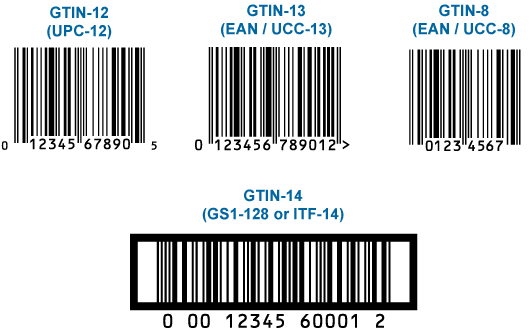Exploring GTIN: Enhancing Supply Chain Efficiency
This article explores the concept of GTIN (Global Trade Item Number) - a unique identifier for products in the supply chain. GTIN is a crucial tool that plays a significant role in streamlining processes and ensuring smooth operations in the global marketplace.
What is GTIN?
GTIN stands for Global Trade Item Number. It is a unique and globally recognized identifier for products in the supply chain. GTINs are used to uniquely identify items, making it easier for businesses to track products from production to point of sale.
The purpose of GTIN is to provide a standardized way of identifying products in the supply chain, facilitating efficient inventory management, traceability, and logistics operations. By assigning a unique GTIN to each product, businesses can ensure accurate and seamless product identification across various stages of the supply chain.
Types of GTINs

There are different types of GTINs, including GTIN-8, GTIN-12, GTIN-13, and GTIN-14. These variations allow for flexibility in assigning identifiers based on the level of detail required for product identification. GTIN-13, commonly known as EAN-13, is the most widely used format for retail products.
The structure of a GTIN consists of a company prefix, item reference, and a check digit. The company prefix identifies the manufacturer or company, the item reference specifies the product, and the check digit ensures the accuracy of the GTIN by validating the other digits.
The Role of GTIN in Supply Chains
GTIN plays a crucial role in supply chains by enabling seamless product identification, tracking, and tracing. With the use of GTINs, businesses can efficiently manage inventory, reduce errors in order fulfillment, and enhance visibility across the supply chain.
By incorporating GTINs into their operations, organizations can improve data accuracy, enhance product visibility, and optimize supply chain processes. This standardized identification system fosters interoperability and collaboration among trading partners, leading to enhanced efficiency and productivity.
Benefits of Using GTINs
Using GTINs offers various benefits, including improved inventory management, enhanced product visibility, and increased operational efficiency. GTINs enable businesses to accurately identify products, reduce instances of stockouts and overstocking, and streamline order processing.
Furthermore, GTINs support traceability and product authentication, enabling businesses to respond quickly to product recalls or quality issues. By adopting GTINs, companies can enhance customer satisfaction, build trust, and achieve greater supply chain transparency.
Examples of GTIN Implementation
Many industries have adopted GTINs to enhance their supply chain operations. For example, in the retail sector, GTINs are used to identify and track products from suppliers to retail stores, enabling efficient inventory management and improved customer service.
In the healthcare industry, GTINs are utilized to accurately identify and trace medical devices, pharmaceuticals, and healthcare supplies. This ensures patient safety, regulatory compliance, and efficient supply chain management within healthcare facilities.
Importance of Accurate GTINs
Accurate GTINs are essential for ensuring data integrity, supply chain visibility, and seamless business operations. Inaccurate or missing GTINs can lead to errors in inventory management, order processing delays, and compliance issues.
By maintaining accurate GTIN data, businesses can improve product identification, reduce data discrepancies, and enhance the overall efficiency of their supply chain operations. It is crucial for organizations to validate and update GTIN information to avoid disruptions and inaccuracies in their supply chain processes.
Comparing GTIN with Other Product Identification Systems
GTIN is a standardized product identification system that offers global recognition and interoperability across industries. Compared to other systems like UPC (Universal Product Code) or ISBN (International Standard Book Numbers), GTIN provides greater flexibility, scalability, and compatibility for diverse product categories.
While UPCs are primarily used in North America and ISBNs are specific to books, GTINs offer a universal approach to product identification that can be applied worldwide. This versatility makes GTIN a preferred choice for businesses operating in global markets seeking a standardized and efficient product identification solution.
Significance of GTIN in Global Trade
In conclusion, GTIN plays a crucial role in global trade by facilitating seamless product identification, supply chain visibility, and operational efficiency. The use of GTINs enhances collaboration among trading partners, streamlines logistics processes, and improves overall supply chain performance.
By embracing GTIN as a standardized product identification system, businesses can optimize their supply chain operations, mitigate risks, and drive growth in the competitive global marketplace. GTIN's significance in global trade underscores its value in promoting transparency, efficiency, and trust across the supply chain ecosystem.